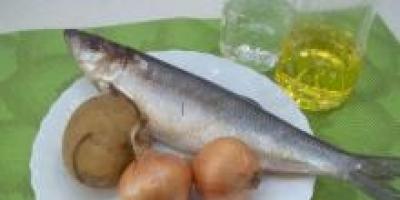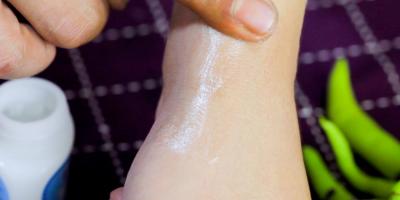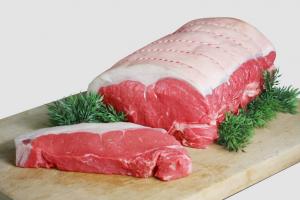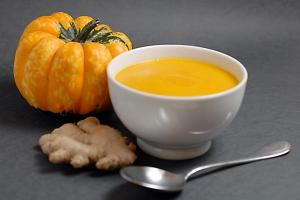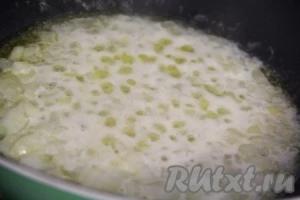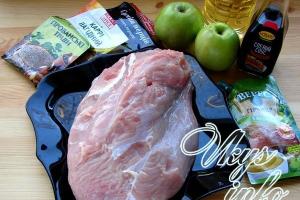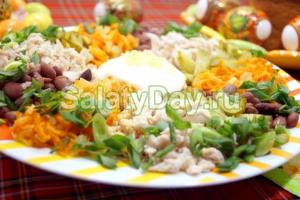You will need:
For the dough: 2 kg of flour, 50 g of yeast (or dry yeast in the amount indicated on their packaging for 2 kg of flour), 250 g of vegetable oil, 1 glass of sugar, 0.5 l of water, a pinch of salt.
To coat larks: sweet, strong tea.
Preparation of the dough:
Larks are made from strong, elastic dough.
Dissolve 2 tablespoons of sugar and yeast in heated (about 38 g) water, stir.
Sift the flour through a sieve or using a special sifter (this will make the dough easier to mix and rise).
Pour dissolved yeast into the flour, add sugar and salt. Stir.
Pour in vegetable oil. Knead the dough for at least 10 minutes. Wait until it stops sticking to your hands and becomes elastic.
Roll the dough into an even ball, place it in a pan, cover the dough with a towel, and leave to rise for about 1.5 minutes. hours (until the dough doubles in size).
How to make larks:
Punch down the dough and mix for a few more minutes. Cut into pieces weighing approximately 100 g, roll them into ropes. Then:
1. Tie the tourniquet in a knot, give the head the appropriate shape, stick in the raisin eyes, lightly press the tail with your fingers, make feathery cuts with a small knife, lubricate the surface with an infusion of strong tea with sugar, bake.
2. The dough rope must be rolled out so that one end is thin and flexible - the head, and the whole body is thicker, elongated, it must be lightly pressed with your fingers. Cut the tail into a fan shape with a knife. For the wings, roll out the dough thinly, cut out the wing, cut the feathers, brush with tea, the last detail is the raisins-eyes.
Author of the recipe: prosphora from St. Simeon's Cathedral (
Chapter:
RUSSIAN CUISINE
Traditional Russian dishes
66th page of the section
Traditional ritual and ceremonial dishes
LARKS
Recipes for making larks
Many entered the life of Orthodox Christians. One of them is the “larks” oven - delicious buns in the shape of birds to mark the beginning of spring and the return of birds from warm countries.
In the imagination of our Slavic ancestors, feathered guests brought spring from there on their wings. Real spring usually began with the arrival of larks - these good messengers of the sun.
In Rus' there was no single day or week for the holiday of welcoming spring. In each locality, this date was determined according to folk signs.
In the old days, such buns were baked for the day of remembrance of the “Forty Martyrs” (40 Roman Christian soldiers tortured in the 4th century for refusing to worship the pagan gods) - March 9 according to the church calendar (March 22 according to the new style).
What a tender and life-affirming holiday this is, when all of nature comes to life and joyful and kind spring chores begin.
The holiday of welcoming spring falls during Lent, so for believers, larks are baked only from lean dough. And the rest of us can indulge in some rich spring buns.
About cooking butter dough see section on page:

"Larks" proofing.
These larks are made using the 1st method (see below "Larks - 1st method").
The “wings” are sculpted separately.
NOTE:
*
- recipes marked with an asterisk can be prepared on fasting days.
Dissolve yeast in warm water, add flour, sugar, vegetable oil, vanillin, a little carrot juice for color and knead the dough (it should have a denser consistency than regular lean dough).
Let it rise, then roll out on a floured surface and cut into strips 15cm long and 2cm wide.
Tie each strip into a knot so that you get a “bird’s head” on top.
Stick 2 raisins on it - “eyes”, at the end of the strip - “tail” - draw several shallow lines with a knife.
Sprinkle the larks with sugar and bake in the oven.
You can also form a “sun” symbolizing warmth: roll out pieces of dough in the form of a circle, stick on “rays”, and make “eyes” and “mouth” from the raisins.
Ingredients:
3 cups flour, 125 g milk, 10 g yeast, 15 g butter, 1 egg, 2 tbsp. spoons of sugar, salt, 1 tbsp. spoon of vegetable oil.
Prepare yeast dough from the indicated ingredients and form larks from it, like from lean dough.
Brush them with egg on top and bake in the oven.
Ingredients:
3-3.5 cups of flour, 1-2 eggs, 1 cup of sugar, 1 cup of kefir or yogurt, 1/2 stick of butter, 1 teaspoon of soda, vinegar.
Grind the eggs until white with sugar, pour in kefir or yogurt, add soda dissolved in vinegar, melted butter, flour and knead the dough.
Let it stand for 10-15 minutes, then form the larks, as if from Lenten dough, brush with egg and bake in the oven.
NOTE.
Many different types for butter dough, see section and.
How to sculpt and decorate holiday shaped pastries, see the page and the links on this page.
The design of the larks may vary

Moscow larks (see below "Larks - 2nd method").

Arkhangelsk larks.

Nekrasovsky larks.

Ural larks.

Ryazan larks.

Ryazan larks.

Tula larks.

Easter larks (see below "Larks - 1st method").

Tula gift lark (rather, it’s a whole firebird).
There are many ways to sculpt larks. We'll show you a few.
So, the first way. Make a long sausage out of the dough and roll it into a knot.

We flatten one end and cut it. We extend the other end a little, forming the head and beak.

Now let's make the eyes. To do this, cut the raisins into pieces. It is more convenient to attach the eyes with a toothpick. Place the raisin on a toothpick and press it into the dough.
Place the finished birds on a greased baking sheet.
The larks need to be allowed to rest a little before being placed in the oven.
Place the birds in the preheated oven.

Ready larks:

We make a short thick sausage. On one side we form the head and beak. We squeeze the other side. This will be the tail and wing.

Cut the flattened side in half. We make “feathers” with a knife.

We bend the wing up. Let's make an eye.
Before baking, the lark can be brushed with a loose egg or yolk. Or sometimes smeared with sour cream.

Ready lark, greased with vegetable oil after baking for shine:

Make a medium length sausage. We bend it into a loop.

We flatten the ends of the sausage and cut them - these are the wings.
On the other side we form the head and beak.
Let's make eyes.

We make two sausages and place them crosswise.

Flatten both ends of the top sausage and one end of the bottom sausage.
We lift the second end of the lower sausage and form the head and beak.

We cut the tail and wings, make eyes.

Finished larks can be greased vegetable oil:

According to a long tradition in home cooking Children take part in the larks.





Previously, in peasant families, children and always livestock were treated to larks.
Larks can be decorated with candied fruits.

Smaller children can be given already sculpted larks so that they can “adjust” them a little to their liking.

Small children can handle making koloboks.

Koloboks are made quite simply:
Cut the roll of dough into pieces, roll them into balls, place them on a greased metal sheet (baking tray), give time to proof, then brush with strong sweet tea with a brush, then after baking the buns will have a smooth, shiny, golden surface (colobans gold).
Results of children's creativity:

Listen to how a real lark sings:
This wonderful melody by Ariel Ramirez (Argentina) performed by the Paul Mauriat orchestra is probably known to everyone.
But did you know that this beautiful music is called “Lark” (“Alouette”)!
The resulting mass is added to the dough like regular yeast.
This “yeast” keeps well in a cold place.
Holiday of the Larks
March 22
Celebration of the arrival of spring
According to the ancient solar calendar of our ancestors, which also had 12 months, the days of the spring and autumn equinoxes, the days of the summer and winter solstices were the first days of the months. On these days, our ancestors celebrated - 3 two-week and 1 (summer solstice) one-day, because... The lean summer season did not allow us to celebrate for long.
The solar calendar has always been accurate because... its connection to four annual astronomical events eliminated the appearance and accumulation of errors.
The number of days in this calendar, as in the modern Gregorian calendar, could be different in different years.

Slavic pagan temple. Holiday eve.
The weak, annually reborn on the renewed morning after the mysterious and magical (the longest night of the year), having gone through Winter and gaining the strength to rise higher in the sky, becomes strong on the holiday, melts the snow, drives away the boring Winter, and the long-awaited Spring comes for all nature.
On this day it begins on the planet.
Children are willingly allowed to make “larks”. When the larks are ready, several birds are placed on the windowsill and the window is opened.
The birds were handed out to the children, and they ran screaming and loudly laughing to call out the larks, and with them, spring. To do this, baked larks were attached to long sticks and they ran out onto the hills with them, or they impaled the birds on fences and, huddled together, shouted as loud as they could:
Larks, come!
Drive away the cold winter!
Bring warmth to spring!
We're tired of winter
She ate all our bread!
They said: “Spring is red, what did it come with? “On a plow, on a harrow, on a sheaf of oats, on a stack of rye.” With the "waders" they tumbled on the straw and said: "Lark waders, fly to the bottom, peck the pashanichka, choose the cockle."
Climbing onto a barn, a fence, or tossing cookies, the children invited spring: “Little sun, look out the window. Sunny, dress up, Red, show yourself! Send us, Lord, a warm summer, a fruitful year and more light!”
The rite of clicking of spring was accompanied by special ritual songs - stoneflies:
You're a hard drinker, a hard drinker, a lark,
You sing your song, a sonorous song!
Sing, sing, little birdie,
Is it a small, vocal bird,
About something about the warm side,
What about those lands, about overseas,
Foreign lands overseas,
Where the dawn meets the dawn,
Where the red sun does not set,
Where there will never be enough heat!
You're on a drinking binge, little lark,
Lark you are a spring guest,
About life, about the unearthly!
|
Today - Russian New Year!
Today the sun is coming to us! Winter is creeping powerlessly away, Spring reigns supreme from now on! Today is a New Life Feast! Today it’s booming and seething, The Color of Life is a BIRTH Color! May our New Year be in winter, |
Sayings and signs on Larks
Northern roe deer to call for spring
on the holiday of Larks
In the Russian North, to usher in spring on the Lark holiday, in addition to lark buns, northern figured roe cookies are baked.
Roe- ritual cookies, a type of gingerbread made from wheat or rye flour, often in the form of sheep, cows, horses or in the form of intricate patterns.
Roes were given to carolers and relatives; to increase fertility, they were fed to livestock, and used as a talisman for barns and stables. In addition, roe deer were used for fortune telling. One of the carols goes like this: “We don’t value the charm of green wine, And we don’t care about the brother of drunken beer, But we don’t care about the festive roe.”
Roe deer are prepared from either rye or wheat dough, which must be tough enough to hold the shape of the curly products well.
The northern gingerbread roe first appeared in Arkhangelsk Solombala, an area of artisan people.
In those distant times, roe deer were baked only for the largest holidays.
For a long time it was believed that the roe deer brings good luck. For example, people believed that if a girl bakes a roe deer herself and then gives it to a young man, then next year she will definitely get married.
A large roe was given to the whole family at once. It was believed that it would bring good luck to the house and become its amulet.
IN holidays“roes” were displayed on the windows of the huts, they were given to relatives and carolers, especially children, to ensure well-being in the house, they were attached to the gates of the barnyard so that the livestock would multiply and would not get lost in the forest in the summer.
Roe deer were most often baked in an oven, but back in the 1930s a more archaic method was used: a figurine molded from dough was dipped into boiling water for a few minutes to brew to preserve its shape, and only then put in the oven.
Gingerbread dough ingredients for roe deer:
- 1 glass of sugar
- 1/2 glass of water
- 1 egg and 2 yolks
- 100 g butter
- 1/2 teaspoon salt
- 1 tablespoon finely ground spices (cinnamon, cloves, cardamom, ginger, nutmeg)
- 0.4-0.5 kg of flour until a thick plastic consistency is obtained
Preparing the dough for roe deer:
1. Pour half the sugar into a deep saucepan or frying pan and, stirring constantly, burn it until it turns dark brown. A kind of “chocolate foam” should form.
2. Very carefully add boiling water to our burnt sugar.
During this procedure, you should wear oven gloves. A lot of hot steam will be released!
Attention! Don't lean over the frying pan, keep your face away!
The boiling water should be steep, not just hot. And it should be poured in very small portions, otherwise it will turn out to be caramel.
4. Remove the pan from the heat. Add butter to the mixture, stir and leave to cool to room temperature.
5.Beat the egg and yolks thoroughly until smooth and add them to the cooled mixture.
6.Pour salt and spices into the mixture.
7. Sift the flour and add it little by little to the mixture, while stirring the dough well so that there are no lumps. Mix the dough with a fork or whisk as long as possible. When the thickened dough can no longer be stirred with a fork, put it on the board and mix with your hands.
8. Kneading the roe dough is finished.
It is better to close it tightly and put it in the refrigerator until tomorrow.
But if you don’t have time, you can leave the dough at room temperature for a while, and then put it in the freezer for 20-30 minutes.
9. The gingerbread dough is ripe.
Roll it out to a thickness of 5-7 mm and cut out the shapes you like. We use different cookie cutters. If you don’t have a suitable mold, you can make a cardboard stencil and use a knife to cut out dough figures using it.
For the roes shown in the photo above, roll out the dough into a layer, cut into strips, roll them into thin long flagella and lay out the patterns on a greased baking sheet.
10. Place the cut out figures on a lightly greased baking sheet.
Bake at 210-220 gr. From 5-10 minutes depending on the size of the gingerbread.
It is very convenient to use silicone baking mats. The dough can be rolled out directly on a mat and baked on it.
If there is absolutely no way to prepare baked goods for the holiday, we will prepare delicious cake without baking:
:
- cookies - 750 g
- sour cream (30% fat) - 500 g
- canned pineapples - 1 can
- milk-0.5 cups
-
- you can add fresh or canned fruits or berries to the filling (bananas, kiwi, peaches, cherries)
You can take any cookies, sweet or not.
In the first case, you just need to beat the sour cream with a mixer until thick, in the second - prepare sweet sour cream: mix 500 g of sour cream, 1 glass of sugar, 10 g of vanilla sugar and beat until thick.
It is useful to add 1-2 tbsp to sour cream. spoons good cognac or Roma.
When assembling the cake, it is important to ensure that there are no empty spaces.
|
Salt the syrup from the canned pineapple slices into a plate and dip the cookies into it. |
|||
|
Pour milk into one deep plate and pineapple juice into another. We will sequentially dip the cookies in them - first in milk, then in juice. |
|||
|
Briefly dip each cookie in milk, then in juice and place in a layer in the pan. |
|||
|
Place the fruit cut into pieces on top of the cookie layer and press lightly. |
|||
|
We make the last layer from dry cookies - they do not need to be soaked in milk.Nowruz (or Nowruz) Nowr at z (Persian - “new day”), as well as International Nowruz Day (March 21) - a New Year holiday according to the astronomical solar calendar among the Iranian and Turkic peoples. Novruz has an ancient, pre-Christian and pre-Islamic origin, and its philosophy, as well as rituals, have nothing to do with the Islamic religion. Moreover, the historical roots (pagan and Zoroastrian past) and the natural-philosophical essence of this holiday are in conflict with Islam, the essence of which lies in strict monotheism and the denial of worship of natural forces. The origin of this holiday goes back to the pre-literate era of human history. It acquired official status in the Achaemenid Empire as a religious holiday of Zoroastrianism. It continues to be celebrated everywhere after the Islamic conquests, right up to the present day. In modern times, it is celebrated on the days on which the spring equinox falls. On the day of Nowruz, the ancient Indo-Aryans worshiped the so-called. “Fravashi” - to the spirits of departed ancestors. This custom was later adopted by Zoroastrianism, which became the official religion of Iran. One of the seven main holidays of Zoroastrians “coincided with the end of winter and the threshold of spring and turned into the holiday of remembrance of the souls of ancestors (Novruz). It fell on the night before the spring equinox.” British scientist M. Boyce notes that in addition to all this, in Zoroastrianism this holiday was dedicated directly to fire, which the ancient Zoroastrians considered the life force and worshiped it: In the later Zoroastrian tradition, there is no doubt that this holiday is dedicated to fire. On the day of Nowruz, since the Achaemenid and Sasanian periods, fire worship was performed in temples. Iranian rulers of that period accepted gifts from conquered peoples on this day. Fires were lit everywhere, from the highest places on the roofs of houses to candles on festive tables. Currently, these customs have been partially preserved. Thus, in some regions of Azerbaijan, “bonfires are lit on all the hills.” People stand in a circle around the fire and sing folk songs. Candles are also attributes of festive tables on the day of Novruz and the days preceding it (preparations for it begin several weeks before the holiday). Similar traditions have been preserved in Iran and Central Asia. For example, Negmati A.N. writes that residents of Samarkand and surrounding villages solemnly celebrate the onset of the last Tuesday on the eve of the New Year according to the Persian calendar (Novruz). After sunset, people light fires, sing songs, and play national instruments. To the sound of a tambourine, they organize a torchlight procession to the outskirts of the river and hold festivities there. They jump over the fires they have built and swim in the river. On this day, more prosperous Tajiks organize joint meals for their poor fellow citizens. Jumping over fires, they wish for a bountiful harvest from nature, and seek protection from evil spirits and genies. Even women with babies jump over the fire, hoping that in this way they will be spared from misfortunes and misfortunes within a year. Other attributes of this Zoroastrian holiday have also been preserved to this day. For example, Zoroastrians filled vessels with wheat or barley seeds, filled them with water, and then, when they sprouted, took them home and placed them in a special place. In the same way, cereal seeds are currently left to germinate for the holiday in Azerbaijan, Iran and Central Asia. Zoroastrians placed eggs on the festive table - a symbol of the origin of life and specific sweets. They are still present on holiday tables. In the Middle East, Novruz is celebrated only by those peoples who lived there before the arrival of the Arabs, the spread of Islam and the emergence of the Arab Caliphate. On September 30, 2009, the holiday of Novruz was included by UNESCO in the Representative List of the Intangible Cultural Heritage of Humanity, from which time March 21 was declared as International Nowruz Day. Server rental. Website hosting. Domain names: New messages from C --- redtram: New messages from C --- thor: |
March 22 is the day of the vernal equinox. The days are getting longer and summer is getting closer. People have always celebrated this day because it marked the end of winter, the awakening of nature from hibernation. The holiday itself is called Magpies, or Larks, and in the church calendar - Forty Saints.
Traditionally, on this day sweet larks or other spring birds are baked - cookies, buns- as if calling for spring and as a sign of the return of birds from warm regions, and, therefore, the full end of winter. It is not customary to eat them right away; they are part of the holiday: larks are seated on branches, thrown up, impaled on sticks and raised, accompanied by songs and dances.
Children will love making sweet larks. Made from delicate butter dough, they turn out fluffy and fragrant. Spring will definitely come much faster if you fill your home with sweet, cozy aromas!
Cooking time: about 3 hours.
Yield: 8 large larks.
Ingredients
- 2 cups flour
- 0.5 cups milk
- 1 egg
- 30 grams butter
- 15 grams of fresh yeast
- 2 tbsp. tablespoons sugar plus more sugar for sprinkling
- pinch of salt
- 4 highlights for the eyes
- 1 yolk for brushing before baking

Preparation
Large photos Small photos
Add butter to milk.

Heat this mixture in the microwave or just on the stove. The butter should melt and the milk should reach a pleasant warm temperature.

Mash the yeast a little in your hands so that it dissolves faster.

Pour the butter and milk mixture over the yeast and stir until the yeast dissolves.

Then add salt, sugar, sifted flour and beat in the egg.

Using a mixer or by hand, knead the dough. It will be sticky at first - this is normal.

After some time, you will notice that the dough has become more elastic and smooth.

Add a little flour to the dough, gather it into a ball and place it in a warm place to rise.

Since there is not a lot of baking in the dough, it will rise quite quickly. When it doubles in volume, you can begin sculpting the larks.

Divide the dough into 8 parts and leave a small portion extra for the wings.
Roll each part into a rope with a diameter of about 1.5 cm.

Tie the resulting sausage into a knot - this will be the lark.

One end will be the bird's head. Flatten it a little, giving it a beak shape at the end. Make eyes from raisins, cut into 4 parts.
Press the other end and make cuts - this will be the tail.

From the remaining dough, pinch off pieces of dough the size of large beans, flatten them and make cuts on one side.

Place the larks on a baking sheet and stick the wings on. If they don't stick well, lubricate them with water on the underside, and then they will stick better.

Leave the larks to rise for 20 minutes. Then brush them liberally with yolk.

Sprinkle the birds with sugar on top.

Bake the larks at 200 degrees for about 15 minutes until the crust is very golden brown. Cool the finished birds at room temperature and you can treat your family and friends.


They entered the life of Orthodox Christians. One of them is to bake “larks” - delicious bird-shaped buns to celebrate the beginning of spring and the return of birds from warm countries.
In the imagination of our Slavic ancestors, feathered guests brought spring from there on their wings. Real spring usually began with the arrival of larks - these good messengers of the sun.
In Rus' there was no single day or week for the holiday of welcoming spring. In each locality, this date was determined according to folk signs.
In the old days, such buns were baked for the day of remembrance of the “Forty Martyrs” (40 Roman Christian soldiers tortured in the 4th century for refusing to worship the pagan gods) - March 9 according to the church calendar (March 22 according to the new style).
What a tender and life-affirming holiday this is, when all of nature comes to life and joyful and kind spring chores begin.
The holiday of welcoming spring falls during Lent, so for believers, larks are baked only from Lenten dough. And the rest of us can indulge in some rich spring buns.
For information on preparing butter dough, see the section on the page:

"Larks" proofing.
These larks are made using the 1st method (see below "Larks - 1st method").
The “wings” are sculpted separately.
NOTE:
*
- recipes marked with an asterisk can be prepared on fasting days.
Dissolve the yeast in warm water, add flour, sugar, vegetable oil, vanillin, a little carrot juice for color and knead the dough (it should have a denser consistency than regular lean dough).
Let it rise, then roll out on a floured surface and cut into strips 15cm long and 2cm wide.
Tie each strip into a knot so that you get a “bird’s head” on top.
Stick 2 raisins on it - “eyes”, at the end of the strip - “tail” - draw several shallow lines with a knife.
Sprinkle the larks with sugar and bake in the oven.
You can also form a “sun” symbolizing warmth: roll out pieces of dough in the form of a circle, stick on “rays”, and make “eyes” and “mouth” from the raisins.
Ingredients:
3 cups flour, 125 g milk, 10 g yeast, 15 g butter, 1 egg, 2 tbsp. spoons of sugar, salt, 1 tbsp. spoon of vegetable oil.
Prepare yeast dough from the indicated ingredients and form larks from it, as from lean dough.
Brush them with egg on top and bake in the oven.
Ingredients:
3-3.5 cups of flour, 1-2 eggs, 1 cup of sugar, 1 cup of kefir or yogurt, 1/2 stick of butter, 1 teaspoon of soda, vinegar.
Grind the eggs until white with sugar, pour in kefir or yogurt, add soda dissolved in vinegar, melted butter, flour and knead the dough.
Let it stand for 10-15 minutes, then form larks, as if from Lenten dough, brush with egg and bake in the oven.
NOTE.
For many different types of pastry, see the and section.
How to sculpt and decorate holiday shaped pastries, see the page and the links on this page.
The design of the larks may vary

Moscow larks (see below "Larks - 2nd method").

Arkhangelsk larks.

Nekrasovsky larks.

Ural larks.

Ryazan larks.

Ryazan larks.

Tula larks.

Easter larks (see below "Larks - 1st method").

Tula gift lark (rather, it’s a whole firebird).
There are many ways to sculpt larks. We'll show you a few.
So, the first way. Make a long sausage out of the dough and roll it into a knot.

We flatten one end and cut it. We extend the other end a little, forming the head and beak.

Now let's make the eyes. To do this, cut the raisins into pieces. It is more convenient to attach the eyes with a toothpick. Place the raisin on a toothpick and press it into the dough.
Place the finished birds on a greased baking sheet.
The larks need to be allowed to rest a little before being placed in the oven.
Place the birds in the preheated oven.

Ready larks:

We make a short thick sausage. On one side we form the head and beak. We squeeze the other side. This will be the tail and wing.

Cut the flattened side in half. We make “feathers” with a knife.

We bend the wing up. Let's make an eye.
Before baking, the lark can be brushed with a loose egg or yolk. Or sometimes smeared with sour cream.

Ready lark, greased with vegetable oil after baking for shine:

Make a medium length sausage. We bend it into a loop.

We flatten the ends of the sausage and cut them - these are the wings.
On the other side we form the head and beak.
Let's make eyes.

We make two sausages and place them crosswise.

Flatten both ends of the top sausage and one end of the bottom sausage.
We lift the second end of the lower sausage and form the head and beak.

We cut the tail and wings, make eyes.
Today is March 22nd. According to the Orthodox calendar, this is the Day of Remembrance of the Forty Martyrs of Sebaste. Also on this day, an ancient Slavic holiday was celebrated - Zhavoronki. It was believed that on this day these small songbirds flew in, and after them spring came.
We are already quite tired of winter, along with its cold and ice, so we decided to call for a warm, sunny spring and bake some butter larks.
This activity is very exciting; your children will love creating their spring masterpieces with you. You can hide a ring, money or a rag tied in a knot in some birds, and in the evening invite friends and over a cup of aromatic tea find out who will soon get married, get rich or have children.
Made for early risers butter dough. Don't forget what's coming Lent, so the dough will be lean. By the way, I like butter dough made with water and vegetable oil more than with milk and eggs.
For those who decide to bake larks according to our recipe, we will reveal our secrets of preparing them. For the dough we use carbonated mineral water, so the dough rises a lot - make the larks not too large and place them on the baking sheet away from each other. To make the birds beautiful and rosy, brush them with strong, sweet tea leaves before baking. After baking, you can grease the larks with vegetable oil.
Well, that’s all the secrets of cooking larks. As you can see, there are few of them, and the process itself is simple and exciting. Let's celebrate spring with fun and delicious food!
Ingredients:
- Flour - 0.5 kg;
- Sparkling water - 200 ml;
- Vegetable oil - 75 grams;
- Sugar - 3 tablespoons;
- Salt - 1 teaspoon;
- Yeast - 1 sachet (11 grams);
- Strong sweet tea- 2-3 tablespoons;
- Raisins for the eyes.
How to make larks from dough:
Step 1
Dissolve the yeast in warm carbonated water.
Step 2
Sift the flour into a deep bowl, add sugar, salt, vegetable oil, water with yeast and knead the dough.
Step 3
Cover the bowl with the dough with a clean towel and place in a warm place for 1 hour.
Step 4
When the dough has risen, knead it and make larks. We make larks like this: we divide the dough into 15 equal parts, roll each ball of dough into a rope and tie it in a knot, form a head from one end of the knot, and flatten the other end and cut it into a tail.

The first method of sculpting larks from dough

The second method of sculpting larks from dough

How to make larks from dough
Step 5
Before baking, lubricate the larks with strong, sweet tea.
Step 6
Bake the larks in a preheated oven at 220-240 degrees for 15 minutes.
Step 7
Ready larks can be greased with vegetable oil.
(Viewed 1 time, 2 visits today)
